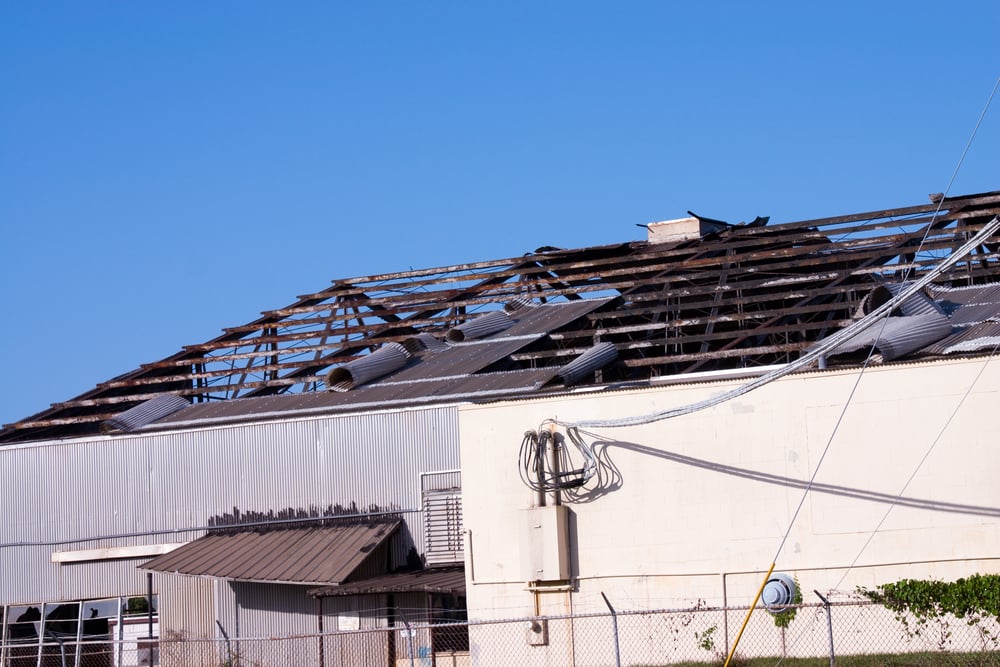Insurance Coverage
Here are the Top 10 Most Significant Liability Coverage Cases of All Time
Randy J. Maniloff | Property Casualty 360°
February 27, 2015

For the past 14 years I have come up with a list of the 10 most significant liability coverage cases each year. It never occurred to me, until now, to put together a list of the 10 most significant coverage cases of all-time. These are the cases, more than any others, that exerted huge influence over the national coverage landscape.
A list like this is possible because, although insurance coverage depends on the underlying contract and state law, courts frequently look to other states for guidance, especially when confronting a case of first impression. By this process, some coverage cases—ones that are frequently turned to for guidance—can come to play a significant part in the development of coverage law on a national basis.
It goes without saying that such a list is incredibly subjective and subject to fair debate. Case in point: Six of the 10 cases on my all-time list don’t appear on the International Risk Management Institute’s list of the “50 Insurance Cases Every Self-Respecting Attorney or Risk Professional Should Know.”
The following is my list of the 10 most significant liability coverage cases of all time with my reasons for the selection. I’ve ranked one through five; six through 10 are in chronological order.
Do you agree with this list? Are there cases you would add? Please let us know in the comment section.

1. Keene Corp. v. Ins. Co. of N. Am. (D.C. Cir. 1981)
I’ve chosen Keene for the top spot because this case was the birth of the continuous trigger, which has cost the insurance industry untold, and unforeseen, billions of dollars for latent injury and damage claims, such as asbestos and hazardous waste. Keene and the continuous trigger also forever altered the general mindset of insurance coverage analysis. Attempting to treat all kinds of claims—even for non-latent injuries—as “continuous” is now de rigueur. Based on Keene, and all that came after it, policyholders now take an “All the world’s a continuous trigger” approach to coverage whenever possible.
Keene also gave rise to the “all sums”/joint and several liability method of allocation when multiple policies are triggered for a continuous injury.

2. Marx v. Hartford Accident & Indemnity Co. (Neb. 1968)
When it comes to coverage litigation under an errors and omissions or professional liability policy, an issue that dominates is the one that goes to the core. The key question is “Does the claim in fact arise out of conduct that is a professional service?” The issue also arises in the context of general liability policies. In this situation, the key question is “Does the injury or damage arise out of conduct that is excluded by a professional services exclusion?”
In Marx, the Supreme Court of Nebraska, in the context of determining coverage under a medical malpractice policy, was required to define the term “professional services.” The definition that was developed—which reads in part: “something more than mere proficiency in the performance of a task and implies intellectual skill”—became the most widely used by courts throughout the country. By my last count, more than 40 states, when addressing the definition of “professional services,” have looked to Marx and cited it with support, although some of the 10 others have never addressed the issue. This is a staggering amount of influence for one decision, especially when you consider that insurance coverage is so frequently fractured among states.

3. Montrose Chemical Corp. v. Admiral Ins. Co. (Cal. 1995)
The Montrose case led to the “Montrose Endorsement,” the insurance industry’s response to its dissatisfaction with the Supreme Court of California’s decision that a party was permitted to purchase a liability insurance policy to cover property damage that the insured knew existed at the time of the purchase, so long as the insured’s “liability” for the property damage was still contingent and not a certainty. In 1999, the Insurance Services Office (ISO) introduced an endorsement, which came to be known as the “Montrose Endorsement,” (followed by incorporation of this language into the October 2001 edition of its commercial general liability (CGL) form (CG 00 01)). The endorsement amended the policy’s insuring agreement by stating that, prior to the policy period, no insured knew that the “bodily injury” or “property damage” had occurred, in whole or in part.
Until the Montrose Endorsement, there had never been a “known loss” provision in a standard CGL policy. The Montrose Endorsement has begun, and will continue, to shape and reshape “known loss,” which is at the heart of the granddaddy of liability concepts: fortuity.
Although Montrose is also well-known for its continuous trigger aspects I’ve chosen it as one of the 10 most significant liability coverage cases of all time because of the known loss provision.

4. Zuckerman v. National Union Fire Ins. Co. (N.J. 1985)
It’s probably a safe bet that the number one litigated issue, under a claims-made policy, is whether the notice provision—that the claim must be first made and reported during the same policy period—has been satisfied. The issue is so frequently litigated because it is almost universally held that, unlike the typical situation with an “occurrence” policy, if the notice provision has not been satisfied, the insurer need not prove that it was prejudiced by the breach. So, if the insurer wins on notice, case closed—even when coverage would have otherwise been owed.
The N.J. Supreme Court’s decision in Zuckerman is one of the first to hold that an insurer need not prove prejudice in order to disclaim coverage, under a claims-made policy, based on the notice provision not being satisfied. The fact that Zuckerman reached its decision without citing to a single decision is certainly strong evidence that the court was writing on a clean slate.
The court’s rationale was that
The event that invokes coverage under a “claims made” policy is transmittal of notice of the claim to the insurance carrier. In exchange for limiting coverage only to claims made during the policy period, the carrier provides the insured with retroactive coverage for errors and omissions that took place prior to the policy period. Thus, an extension of the notice period in a “claims made” policy constitutes an unbargained-for expansion of coverage, gratis, resulting in the insurance company’s exposure to a risk substantially broader than that expressly insured against in the policy. Obviously, such an expansion in the coverage provided by “claims made” policies would significantly affect both the actuarial basis upon which premiums have been calculated and, consequently, the cost of “claims made” insurance. So a material modification in the terms of this form of insurance widely used to provide professional liability coverage both in this State and throughout the country would be inequitable and unjustified.
Zuckerman was the start of what went on to become the wide majority notice rule for claims-made policies that “no prejudice” is required. Many courts that took that route did so based on the Zuckerman rationale.

5. Northwestern National Casualty Co. v. McNulty (5th Cir. 1962) (applying Florida law) andLazenby v. Universal Underwriters Insurance Co. (Tenn. 1964)
McNulty and Lazenby are the two most frequently cited decisions on the public policy debate concerning insurance coverage for punitive damages. More than any others, these two cases have shaped the issue nationally. Because they are peas-and-carrots decisions—when one is cited expect to see the other as well—I count them as one for purposes of this list.
In McNulty, the U.S. Court of Appeals for the Fifth Circuit held that public policy precluded a tortfeasor [a person who commits a civil wrong] from securing insurance coverage for punitive damages that were awarded against him for bodily injury that he caused while driving drunk. In the eyes of the McNulty court, because punitive damages are awarded for punishment and deterrence, it would serve no useful purpose if the party responsible for the wrong could shift the burden to its insurance company.
The other side of the coin is Lazenby, in which the Supreme Court of Tennessee was not convinced by the McNulty rationale for disallowing insurance coverage for punitive damages. The Tennessee high court concluded that it was speculative that socially irresponsible drivers would be deterred from their wrongful conduct if coverage for punitive damages were not allowed. TheLazenby court put it this way: “This State, in regard to the proper operation of motor vehicles, has a great many detailed criminal sanctions, which apparently have not deterred this slaughter on our highways and streets.”
In my practice, I’ve seen courts analyze both decisions, choose one over the other, and explain the decision why McNulty, not Lazenby, should be followed in the state, or vice versa.

6. G.A. Stowers Furniture Co. v. Am. Indem. Co. (Tex. Comm’n App. 1929)
Stowers is the best known case to adopt the hugely important rule of bad faith failure to settle. In general terms, if there is a settlement demand within policy limits such that an ordinarily prudent insurer would accept it, the insurer fails to do so, and the case proceeds to trial, the insurer is then liable for the entire amount of the judgment, including the amount exceeding the insured’s policy limits. The “Stowers Doctrine” exists, in some way, shape or form, in just about every state in the country. Stowers is the brand name. But the many generics that have come after it can be just as potent.

7. Weedo v. Stone-E-Brick, Inc. (N.J. 1979)
The amount of coverage litigation addressing whether an insured’s faulty workmanship is an “occurrence” is staggering. Many courts hold that it is not, although, in recent years, that has been going the other way. The most influential case nationally in favor of “no occurrence” is the N.J. Supreme Court’s decision in Weedo. In this case, the court held that no coverage was owed to a contractor for faulty workmanship when the damages claimed were the cost of correcting the work itself.
The Weedo court reached its decision, in part, in reliance on Dean Roger Henderson’s seminal law review article, “Insurance Protection for Products Liability and Completed Operations: What Every Lawyer Should Know,” [50 Neb. L. Rev. 415 (1971)], which stated:
The risk intended to be insured is the possibility that the goods, products or work of the insured, once relinquished or completed, will cause bodily injury or damage to property other than to the product or completed work itself, and for which the insured may be found liable. The insured, as a source of goods or services, may be liable as a matter of contract law to make good on products or work which is defective or otherwise unsuitable because it is lacking in some capacity. This may even extend to an obligation to completely replace or rebuild the deficient product or work. This liability, however, is not what the coverages in question are designed to protect against. The coverage is for tort liability for physical damages to others and not for contractual liability of the insured for economic loss because the product or completed work is not that for which the damaged person bargained.
No decision more than Weedo has been more influential on courts’ concluding that an insured’s faulty workmanship is not an “occurrence.”

8. Appalachian Ins. Co. v. Liberty Mut. Ins. Co. (3d Cir. 1982)
A massive amount of coverage litigation has taken place over the issue of number of occurrences. Whether injury or damage was caused by one occurrence, or more, can have a monumental impact on the extent of an insurer’s liability for a claim, an insured’s liability for any deductible or retention and the amount recoverable for underlying plaintiffs. Any list of the 10 most significant liability coverage cases of all time must include one addressing the number of occurrences. But there is no single number-of-occurrences decision that stands out above the rest as the most influential. Many decisions address the two competing theories: the cause test, which usually has a way of resulting in a single occurrence, and the effect test, which can be expected to result in multiple occurrences. After much consideration I give the nod to the U.S. Court of Appeals for the Third Circuit in Appalachian Ins. Co. v. Liberty Mutual.
The court in Appalachian held that, despite there being claims by several individuals, Liberty Mutual engaged in sex discrimination in its claims department in hiring, promoting and compensating women. “The injuries for which Liberty was liable all resulted from a common source: Liberty’s discriminatory employment policies. Therefore, the single occurrence, for purposes of policy coverage, should be defined as Liberty’s adoption of its discriminatory employment policies in 1965.”
Appalachian has been cited nationally numerous times and has been at the heart of many cases that adopted the cause test, which is clearly the majority rule nationally. In addition, by addressing the number of occurrences outside the asbestos and automobile accident context, the case can’t be accused of being limited to those situations.

9. San Diego Navy Fed. Credit Union v. Cumis Ins. Soc’y (Cal. Ct. App. 1984)
The term “Cumis Counsel”—named for both the case, and the statute that came after it—is automatically associated with California. Cumis Counsel is essentially defense counsel chosen by the insured (that is, not “panel counsel”) and paid for by the insurer, when the insurer is defending an insured under a reservation of rights (ROR) and the nature of the ROR creates a conflict between the parties. Whether the reservation of rights, in fact, creates a conflict sufficient to warrant Cumis Counsel is when the disputes often arise. But, despite Cumis being so closely tied to California, its rule, in some manner, is the majority one nationally. Cumis is the 900-pound gorilla that has exerted tremendous influence over the hugely important “independent counsel” issue.

10. Kenyon v. Security Ins. Co. of Hartford (Sup. Ct. N.Y. 1993)
No list of the 10 most significant liability coverage cases of all-time could be complete without one addressing the pollution exclusion, one of the most litigated coverage issues over the past three decades or so. Numerous cases could be chosen to take the pollution exclusion spot on this list, but I give the nod to Kenyon v. Security Ins. Co. of Hartford—notwithstanding that it is a New York trial court decision from Monroe County (Rochester, N.Y.). At the heart of the surfeit of litigation over the absolute/total pollution exclusion has been whether it applies broadly, to all hazardous substances, or narrowly, to solely traditional environmental pollution.
Kenyon was the first case to use the term “traditional environmental pollution” when discussing the absolute/total pollution exclusion that was specifically drafted to eliminate the “sudden and accidental” component of the first significant pollution exclusion. The court held that the pollution exclusion did not preclude coverage for bodily injury sustained as a result of carbon monoxide poisoning from faulty design or installation of a furnace. Although Kenyon doesn’t have a huge number of citing references, it opened the door to the phrase “traditional environmental pollution,” which scores of courts have walked through when discussing the pollution exclusion.
If I create this list again 14 years from now, it will be interesting to see which cases stay on the list and which ones are replaced.
The content of this article is intended to provide general information and as a guide to the subject matter only. Please contact an Advise & Consult, Inc. expert for advice on your specific circumstances.
SOURCE: www.propertycasualty360.com
